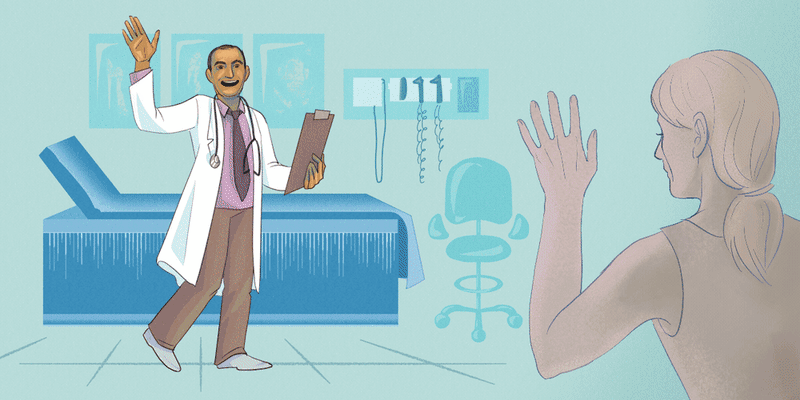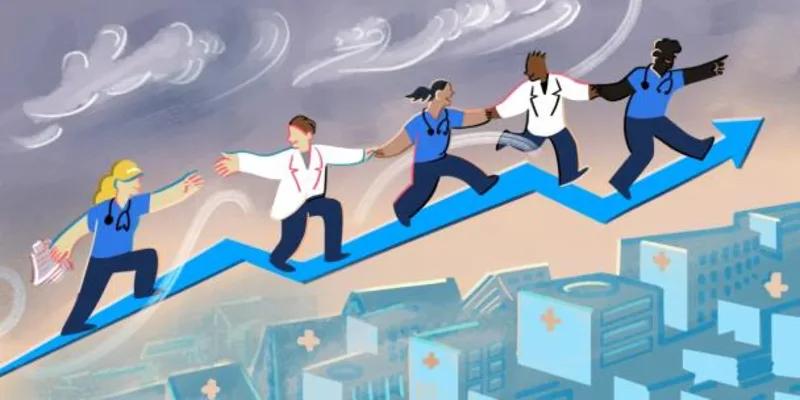As a new fourth year student, I believed that the year of clinical experience already under my belt would prepare me for my critical care rotation. And while I wasn’t completely naive, the MICU would go on to humble me for the next four weeks. Not just from the complexity of the cases or the intensity of the workflow; rather, the staggering nature of the emotional stakes that each story carried is what floored me numerous times. One such story sticks out.
The Monday of my second week, Mrs. R arrived. She was a woman with a terrible stroke of luck: a diagnosis of metastatic renal cancer before the age of 50. She was here as an ED transfer for flank pain and was found to have a subcapsular hematoma, which progressed to hemorrhagic shock. As if that wasn’t bad enough, her pulmonary hypertension and tumor thrombi extending all the way from her inferior vena cava into her right atrium made her a poor surgical candidate.
Clearly, she was very sick. And I knew this walking into her room before morning rounds. My first glimpse seemed to confirm my suspicions: her skin was sallow, her breathing labored, eyes distant. But her voice was clear. And I was stricken by the fact that Mrs. R didn’t seem scared. She was attentive, calm, and soft-spoken, even laughing at my shaky attempt of a joke. When I told her that we’d do our best to treat her and that she was in good hands, she believed it. She told me that her daughter’s birthday was a week from today, and she only cared about making it until then.
In the coming days, however, the circumstances only worsened, bad luck piling like so many straws on a camel’s back. Her hemorrhagic shock resulted in renal failure, and so we started continuous renal replacement therapy. She continued to bleed into her abdomen despite the best efforts of our interventional radiologists who, in a last-ditch effort, had embolized her entire left kidney. We simply couldn’t tell where the bleeding was coming from. On subsequent morning exams, her abdomen became tighter and more distended, and she now required patient-controlled analgesia to control her pain. To make matters worse, her oxygen requirement began to rise at a rapid rate, from room air to low flow to high flow. We hypothesized that, because of her prolonged stay in the bed, she had accumulated new clots in her lungs. Mrs. R was without a doubt the most ill patient I had cared for.
And so, the MICU team was at a standstill. Intervening on her coagulopathy imposed the risk of causing continued hemorrhage, but doing nothing introduced the risk of further clots. We knew surgery wasn’t an option. And so, all we could do was transfuse her when her counts dropped too low, knowing that, eventually, she would develop abdominal compartment syndrome. And this was assuming she wouldn’t pass from acute hypercapnic respiratory failure before we got to that point. It was a bleak situation. Our hope was dwindling, and we knew we needed to communicate this with her. Thus began a series of Goals of Care discussions.
She listened quietly as we relayed the situation. Explaining how we couldn’t pinpoint the exact source of her abdominal hemorrhage. And that her new oxygen requirement, now at 65 L, was very concerning. I saw worry etched into the faces of all who stood solemnly around her bed, still as statues. Her family had tearful eyes; they had been briefed on her severity outside of the room. After explanations ran their course, we brought up the notion of comfort care, though my composure only started to crumble once we said we were doubtful she’d make it to her daughter’s birthday.
And Mrs. R sat with the utmost composure. Nodding, she said, “God will get me through this, He makes miracles happen every day.” I didn’t know what to think at first. I admired her certainty, her faith that things would get better. Above an ocean of despair, her demeanor refused to sink. Yet I couldn’t help but have doubts. Unlike the grim countenances that pace the halls with scrubs and stethoscopes, miracles appeared to be rare in the MICU.
That was on Thursday, and the next two days went by quietly, casting no ripples or wrinkles into our management plan (which at this point was largely palliative). More discussions were held, in which Mrs. R decided to become DNR as a precaution. During those discussions, I’m ashamed to admit that I had already come to terms with Mrs. R’s mortality; I predicted she would die.
Sunday, my day off, drifted by ever so slowly, and I must have checked her chart at least five times for updates. I looked closely for any sign of the word “deceased.” But come Monday, she was still there, smiling and spending precious minutes with her beloved daughter.
Within the next week, a bewildering change in events occurred: Mrs. R began to get better. Her blood counts rose, her O2 requirement fell, and subjectively, she was improving. Soon enough, she was able to transfer out of the MICU to the hem/onc floor. And, as I discovered a few weeks ago, she was discharged from the hospital to home health. It was astounding.
I was aware of the concept that physicians are notoriously bad at predicting patient outcomes. But, in the face of such immense illness, how could she live? My team, myself included, felt powerless to stop death’s insidious advance. Nothing short of a miracle was needed here, and indeed, Mrs. R was counting on one. But I found her faith to be the miracle itself. That she, with no more options left except to wait and hope, showed no fear. I was preparing for the worst without hoping for the best, and this was my mistake: the abandonment of hope. If there’s any lesson to carry onward, it’s to keep hope close. I won’t forget that.
Share your miracles in the comments.
Andrew Schmidt is a fourth year medical student at the University of Virginia. He is interested in anesthesiology and critical care medicine, as well as narrative medicine. All names and identifying information have been modified to protect patient privacy.
Image by francescoch / GettyImages






